[Atari, Windcrest Software]
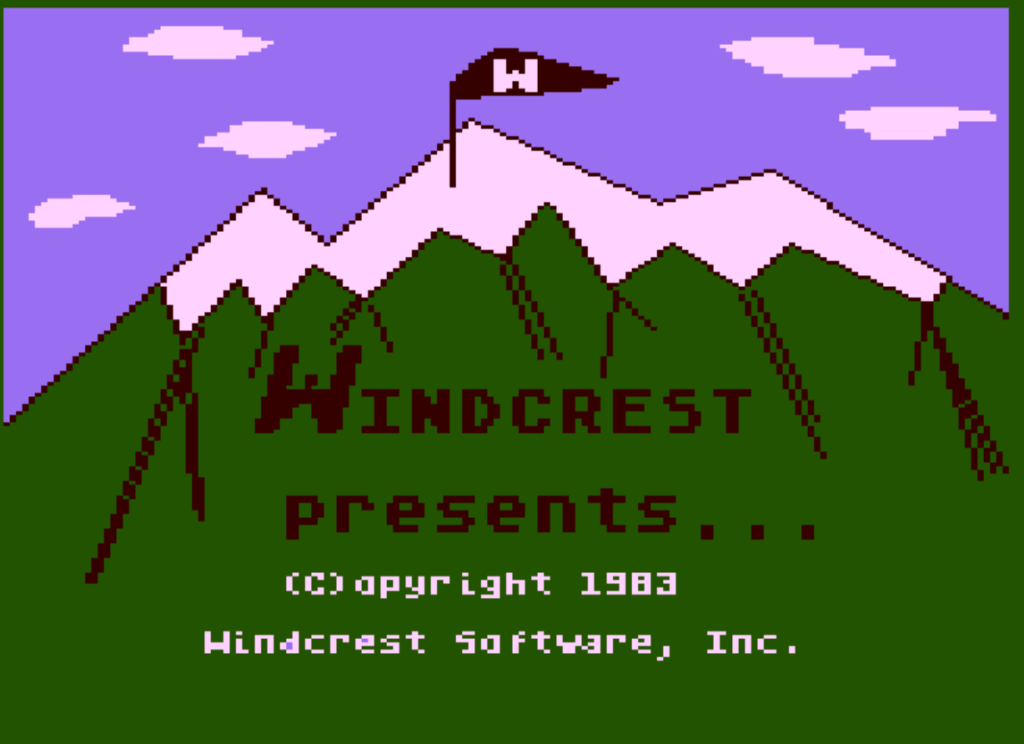
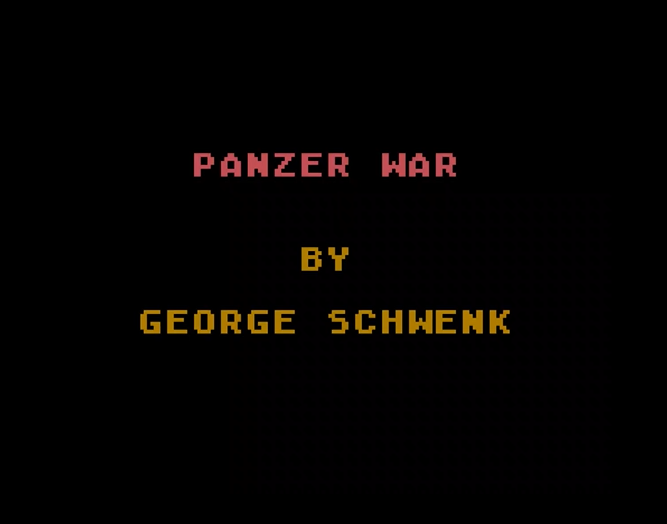
Panzer War is George Schwenk’s first wargame after having, I believe, answered a Windcrest Software classified ad for a gig that turned out to be “code our games, don’t receive anything back“. I initially skipped this game because the manual was lost, but I feel I understand enough of the game to showcase it.
Panzer War is essentially a WW2 Eastern Front game played at a very simplified operational level and in which combats are resolved in arcade battles. It comes with several scenarios, but the map is always the same: the difference is in the type and starting position of the units. I select the scenario “Attack on Kursk”, which by default allocates me 6 units of Panzer IVs against 6 units of T-34s, and pimp my line-up a bit by replacing 3 of my Panzer IV units with one of Panzer III, one of Panzer V (theoretically “Panther” but the stats don’t match) and one of Panzer VII (“Tiger”). The difference between the various units is in terms of Firepower (P), Speed (S), Range (R), Armor (A) and Tank Points (TP), the latter only used I believe to compute the score at the end of the game.
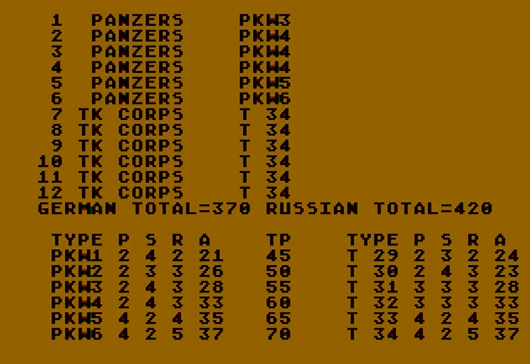
When the scenario opens, the Germans (the only faction playable in solitaire) occupy the middle of the map, with their cities well behind them. The Soviets are spread out, with two groups of 3 units separated by hilly terrain.
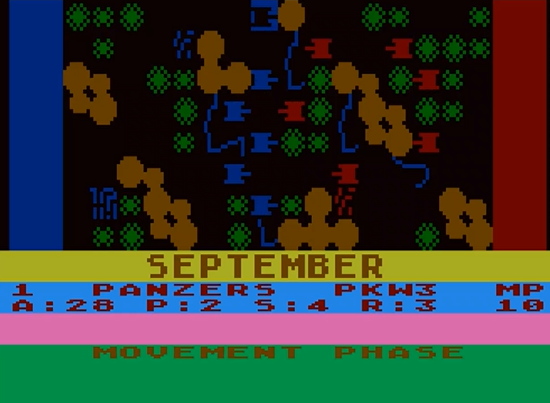
I only have a limited number of turns for a decisive victory, so I immediately dash forward and whenever possible end my movement in contact with the enemy – which triggers combat if the Soviets stay put. “If”, because before combats are resolved, the Soviets have their movement phase and they can refuse combat by moving their units out of the way. In the first turn, the Soviets are fair-play enough to remain where they are and accept combat in two locations:
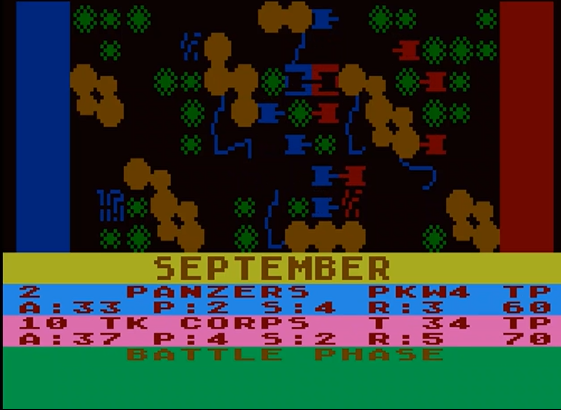
In Panzer War, battles are resolved by an arcade phase where each side must destroy the other tank as many times as possible.
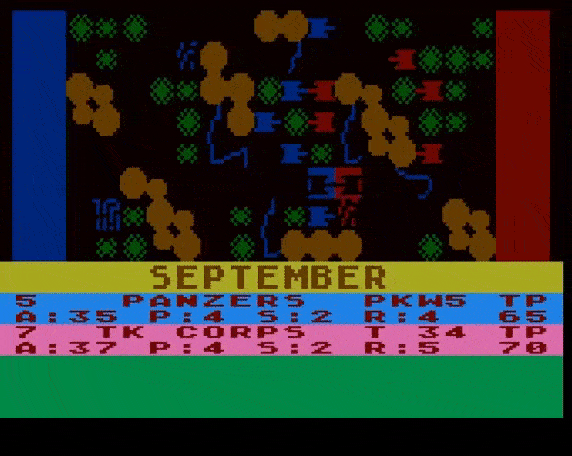
When a tank is hit, it is instantly destroyed and respawned, and its unit loses as many Armor points (materialized by tank icons at the top of the screen) as the other side has in Firepower value. Combat ends when a unit is brought to 0 Armor points (rare this early in the campaign) or after 45 seconds. At the end of the combat, an end screen recapitulates the losses in Armor points and gives the result of combat: destruction, “stand-off” or retreat by one square – in which case the other side follows. There are two arcade phases by unit in contact, but if a unit is attacked by multiple sides, it can be engaged in 4 or 6 arcade phases in a row.
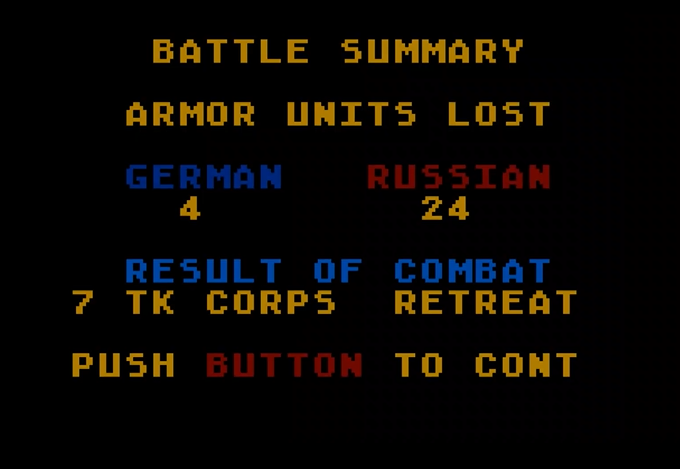
Units which end their turn not in contact with the enemy will repair, making the Soviets fairly resilient: when their units are not in full shape they can easily fall back and repair. On the other hand, units project zones of control horizontally and vertically, and units cannot move nor retreat from one enemy zone of control to another. Using this, I block 2 Soviet units in October:
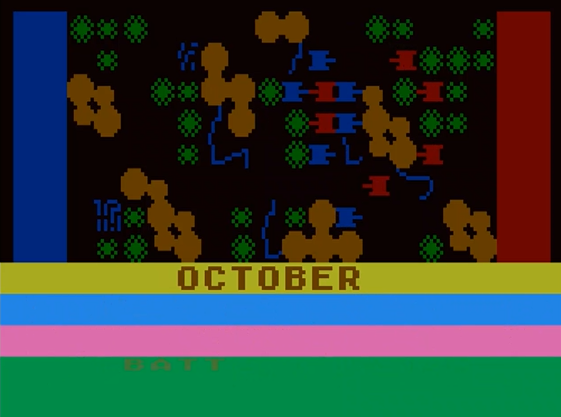
One of them is destroyed by 3 successive attacks, but the other one manages to push me away and break the encirclement for a time – it takes me one more month to fully destroy it!
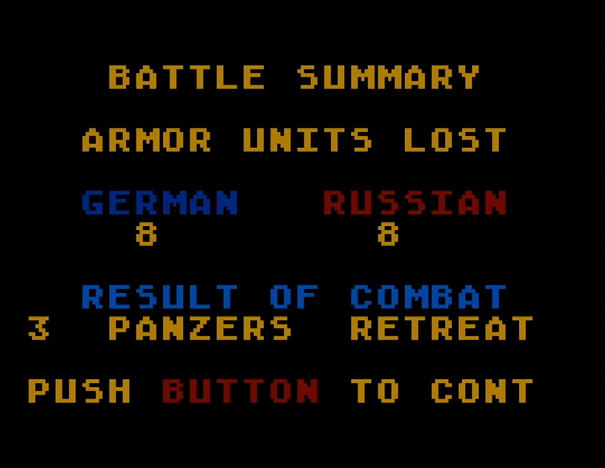
In December, something expected happens: Winter!
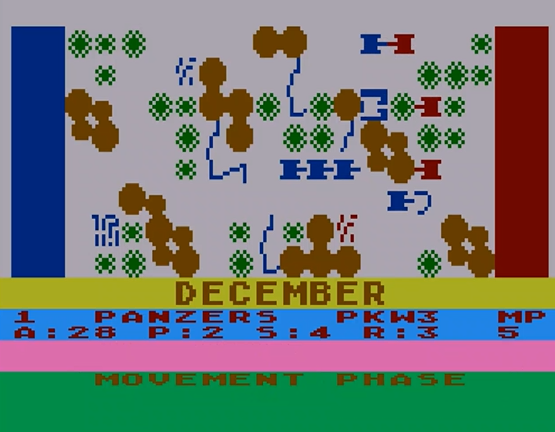
Units on the strategic map are massively slowed down. My Panzer V and Panzer VI units can only move two tiles per turn on clear terrain or one in difficult terrain.
Winter also impacts the arcade phase. My heavy tanks are sluggish and can’t dodge anymore:
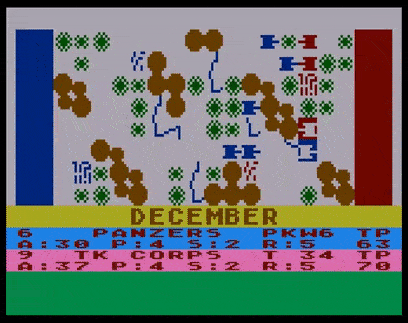
Nonetheless, I press on with my most mobile units and even occupy the enemy city – I am not sure of the strategic impact for the Soviets, if any.
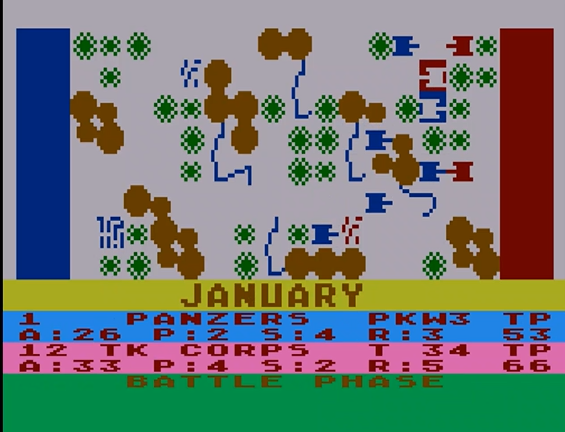
The city turns out to be solid defensive terrain, with the “buildings” a perfect place to just pass the top of the gun out of cover and shoot.
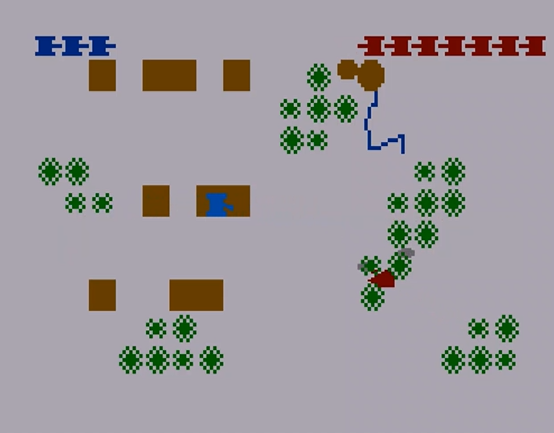
In March, winter recedes…
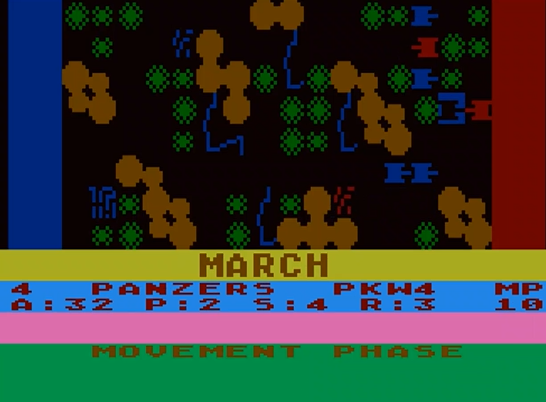
But I barely have the time to bring my slow Panzer V and Panzer VI somewhere useful before the game ends:

Ratings & Reviews
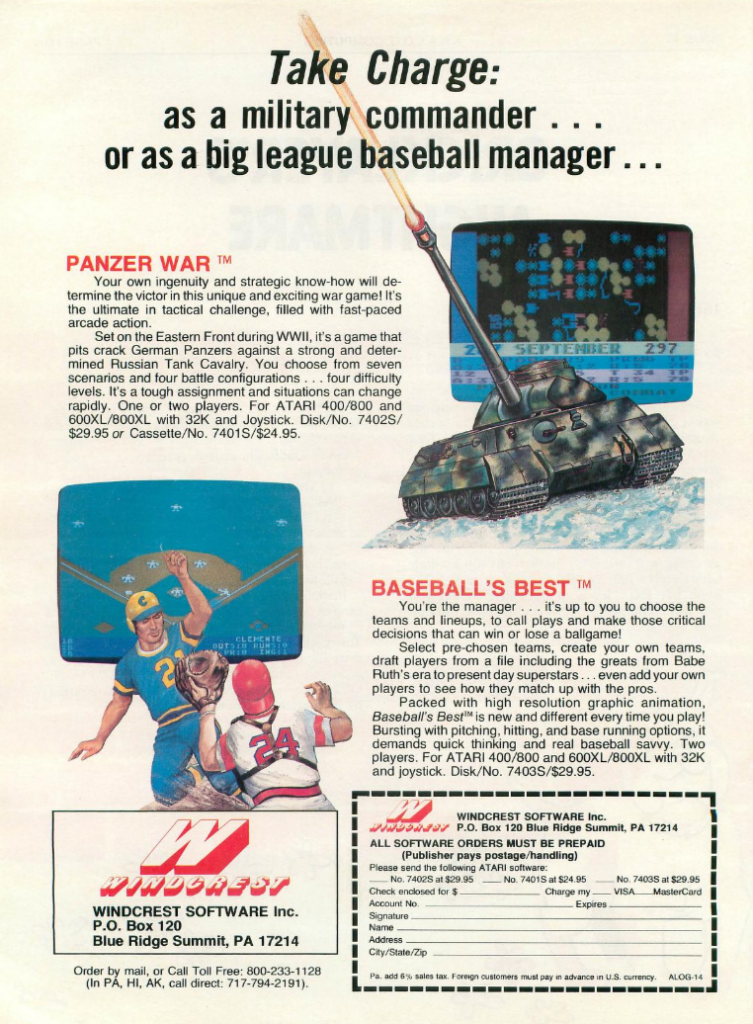
Panzer Wars, by George Schwenk, published by Windcrest Software, UK
Genre: Action-Strategy
First release: January 1984 on Atari 8-bits
Average duration of a campaign: 40 minutes
Total time played: 3 hours
Complexity: Trivial (1/5)
Final Rating: One star
Ranking at the time of review: 45/120
Unfortunately, I have nothing to add about George Schwenk, Windcrest Software or the production of this game compared to what I have written in my After Pearl article, so let’s move directly to the ratings:
A. Presentation: Poor Acceptable for a wargame, lacklustre for a 1984 arcade game.
B. UI, Clarify of rules and outcomes: Adequate. I am judging the game without the manual, but it is easy to play – helped in this by its simple ruleset.
C. Systems: Poor. It is the third Action-Strategy game I played (after S.E.U.I.S. and Archon) but the first one where arcade combats are not “to the death” – and it changes everything. For the first time, the strategic situation changes how you want to approach combat: sometimes you want to play defensively to conserve your strength, other times you want to deal as much damage as you can (to force the enemy to retreat, or maybe to destroy before it can recover) and you will dash through the battlefield. Terrain and weather have a significant impact as well and force you to approach each battle somewhat differently. Generally speaking, the action phase is simple but fun, but I wish there had been as much unit diversity as in Archon – the differences between the tanks are felt, but not enough to play differently as Panzer I and a Panzer VI.
Unfortunately, this solid arcade gameplay feeds a barebone strategic layer. As far as I understood the game, there is no production site to occupy, no supply routes to defend, no artillery to neutralize, so the “wargame” layer is purely tactical: how to attack enemy units the most efficiently by surrounding it and cutting its retreat. That’s better than no strategic layer at all but it is not fully satisfying either.
D. Scenario design & balancing: Poor: There are several scenarios, but only one map. All the scenarios can also be modified in terms of unit composition and starting placement, but again no change is possible on the map.
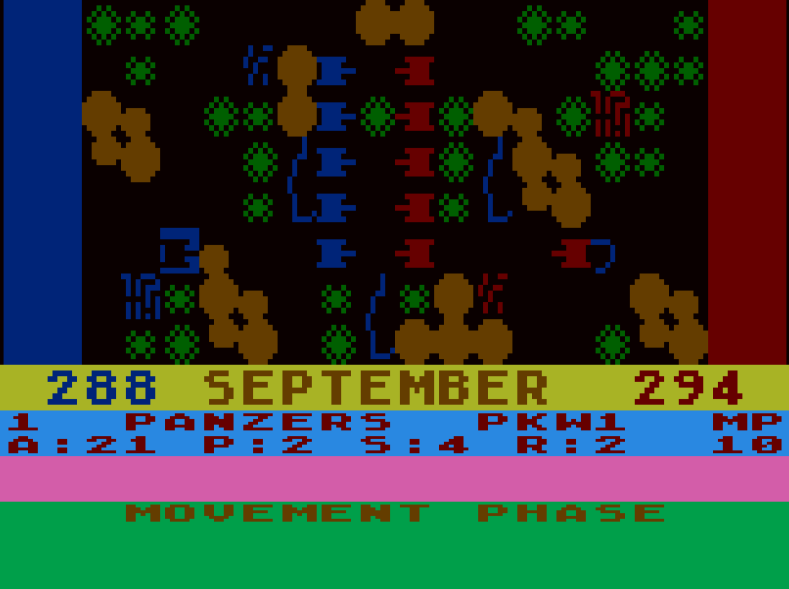
The AI is weak but fun to play against in arcade (it even pivots to defence when its Armor value is low). Strategically, it is erratic – I believe it chooses randomly every turn whether to fall back, move aggressively or just stand there and accept its fate.
E. Did I make interesting decisions? Almost none. The fun part of the game is the arcade, the strategic layer is only there to give a reason to fight.
F. Final rating: One star. It is not a great, but the arcade section is still fun today. Panzer War ranks much better than S.E.U.I.S, despite the latter having a better strategic layer, but below Archon which had a diversified roster of units and an incredibly better presentation.
I could not find any review for the game – Computer Gaming World only wrote a two-sentence note acknowledging its existence, calling it “Basically a tank arcade game [with] the twist of a strategic map“, which I’ll admit Panzer War is. It was still considered wargamy enough to be included in Evan Brooks’ Paiktography of wargames, but not wargamy enough to be rated there.
This ends my coverage of George Schwenk’s games. The cRPGAddict just covered his “quasi-RPG” Around the World, and I have to thank him for that – now we just need to wait for a future “Computer Sports Game Addict” to emerge for Computer Football Strategy and Baseball’s Best and Schwenk will be fully covered!
2 Comments
At least the arcade bit was fun. They lose points for making up Soviet tanks though.
I have been reading the CRPGAddict’s coverage of the Mr. Schwenk’s game when I noticed a comment about Panzer War post, and I was like “I don’t remember that article”. So I headed over here and lo and behold, a new entry from the Scribe!
Rarely does one get a day of such glory as a new CRPGAddict entry and a new Wargaming Scribe entry on the same day*. 🙂
*) They weren’t published on the same day, but I had a delay getting to the CRPGA’s blog.
Keep up the good work, Scribe!